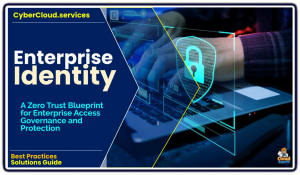Identity Hijacking: Understanding and Prevention
It is crucial to be aware of the risks associated with identity hijacking and take proactive steps to protect yourself online.
 Identity hijacking, also known as identity theft or account takeover, poses a significant threat to enterprises by allowing unauthorized individuals to gain access to a user’s credentials or identity for malicious purposes.
Identity hijacking, also known as identity theft or account takeover, poses a significant threat to enterprises by allowing unauthorized individuals to gain access to a user’s credentials or identity for malicious purposes.
This type of attack can result in severe consequences, such as data breaches exposing sensitive corporate or customer information, financial losses from unauthorized transactions, operational disruptions affecting critical systems, reputational damage that erodes stakeholder trust, and violations of regulatory compliance requirements like GDPR or HIPAA.
Attackers commonly employ methods such as phishing, credential stuffing, social engineering, exploiting weak passwords, or using credentials stolen from data breaches to compromise identities.
Enterprise Identity
To protect against identity hijacking, enterprises should adopt robust identity and access management (IAM) practices. Strong authentication mechanisms are essential, starting with multi-factor authentication (MFA) that requires at least two forms of verification, such as a password combined with a biometric or hardware token.
Passwordless authentication methods, like biometrics or FIDO2 standards, can further reduce risks by eliminating reliance on passwords. Adaptive authentication, which assesses contextual factors like device or location, can dynamically trigger additional verification for suspicious activities. Additionally, enforcing strong password policies, supported by enterprise password managers and tools to block compromised passwords, helps minimize vulnerabilities.
Centralizing identity management through a comprehensive IAM solution, such as Okta or Microsoft Entra ID, streamlines access control and enhances security. Single Sign-On (SSO) reduces the number of credentials employees manage, lowering the risk of exposure, while role-based access control (RBAC) and least privilege principles ensure users only access resources necessary for their roles.
Continuous monitoring is critical to detect threats early. User and Entity Behavior Analytics (UEBA) tools can identify unusual login patterns, and Security Information and Event Management (SIEM) systems provide real-time threat correlation. Alerts for activities like multiple failed logins or privilege escalations enable rapid response.
Securing endpoints and devices is another vital layer of defense. Enterprises should enforce device compliance using Mobile Device Management (MDM) or Endpoint Detection and Response (EDR) solutions, ensuring devices have updated antivirus software and secure configurations. Conditional Access policies can block access from untrusted devices, further reducing risks. Employee education is equally important.
Regular security awareness training on phishing and social engineering, combined with simulated attacks, strengthens workforce resilience. Promoting a culture of promptly reporting suspicious activity ensures early detection of potential threats.
To prevent credential theft, enterprises must use secure communication protocols like HTTPS and TLS and implement email security measures such as DMARC to combat phishing.
Dark Web Scanning
Regularly scanning for exposed credentials on the dark web or breach databases adds an extra layer of protection. Adopting a Zero Trust architecture, which assumes no user or device is inherently trustworthy, ensures continuous identity verification and limits lateral movement within networks if credentials are compromised. Micro-segmentation and ongoing validation of access requests align with this approach.
Regular audits and access reviews are necessary to maintain a secure environment. Enterprises should periodically remove unnecessary permissions, automate account de-provisioning for former employees, and scrutinize third-party access to ensure vendors meet security standards. Preparing for incidents is also critical. A well-tested incident response plan, supported by tools like Microsoft Defender for Identity, enables swift action to contain and mitigate breaches. Maintaining backups of critical systems ensures recovery from potential attacks.
Finally, enterprises should stay proactive by leveraging threat intelligence to keep abreast of emerging attack techniques and aligning with standards like NIST 800-63 or ISO 27001. Vetting third-party SaaS or cloud providers for robust IAM practices is essential, as their vulnerabilities can impact enterprise security. By integrating these comprehensive strategies, organizations can significantly reduce the risk of identity hijacking, safeguard sensitive assets, and maintain operational and reputational integrity.



